CIRS Mold Toxicity Treatment in Lincolnia, VA
Experiencing mold toxicity is a terrifying thought for most people. Although it may seem like an interesting concept for a medical drama, nobody wants to experience the effects of mold exposure firsthand.
Mold is a fungus that thrives in wet environments, such as under tiles, wood floors, and ceilings, pipes, and roofs. While several types of mold exist, some are more hazardous than others, and some individuals may be allergic or sensitive to mycotoxins, the toxins that mold naturally produces. Exposure to excessive amounts of mold, or the types of mold that trigger health problems, can lead to mold toxicity and even CIRS - Chronic Inflammatory Response Syndrome. This acute and chronic systemic inflammatory response syndrome is typically acquired after exposure to mold or other producers of biotoxins, usually from damaged water buildings.
If you believe that you're suffering from mold toxicity or mold illness, it can seem like the world is folding in on you. No matter what you do, your symptoms persist, lowering your quality of life and eliminating your peace of mind. Fortunately, there is reason to be hopeful: Proactive Wellness Centers now offers a research-backed, highly effective mold illness poisoning treatment in Lincolnia, VA for men and women just like yourself and your children as well if they have been impacted.
Service Areas
Understanding
CIRS and Mold Toxicity
CIRS and mold illness are on the rise, and accurate diagnosis of the issue plays a major role in this trend. Thanks to Dr. Ritchie Shoemaker, there is a huge body of evidence that covers diagnosing and treating patients with CIRS. Dr. Lawson is one of less than 30 practitioners in the United States that are fully certified by Dr. Shoemaker for diagnosing and treating CIRS. The body of evidence by Shoemaker and many associates is the largest body of scientific evidence that is published in major medical journals. Around 80% of CIRS/Mold cases are caused by indoor air contaminated with mold toxins and other triggers. However, it's important to note that CIRS can also be caused by biotoxin producers such as cyanobacteria and a marine dinoflagellate that produces the Ciguatera toxin found in certain types of fish.
When mold or biotoxins are not processed effectively, a series of biochemical changes known as the Biotoxin Pathway occur. Genetic studies have revealed that approximately 24% of individuals have a genetic makeup that makes them susceptible to developing an illness related to mold or biotoxins. The remaining 76% of the population can typically eliminate these toxins from their system and avoid the development of the Biotoxin Pathway that can lead to various diseases.

CIRS and Mold Poisoning Misdiagnosis
CIRS and mold exposure symptoms overlap with many other chronic illnesses, which makes diagnosis challenging and can even lead to missed diagnosis of CIRS. Based on research from Proactive Wellness Centers, CIRS is frequently misdiagnosed. Some of the most common misdiagnoses include:
- Lupus
- Chronic Pain Syndrome
- Fibromyalgia
- Parkinson's Disease
- Multiple Sclerosis
- Chronic Fatigue Syndrome
- PTSD
- More
Lyme disease, in particular, is often misdiagnosed. We have treated a number of patients whose symptoms were in line with Lyme disease. Fortunately, we were able to confirm the presence of CIRS and mold and were able to successfully help those patients using CIRS treatment in Lincolnia, VA.
Note that many of these patients have CIRS and Lyme disease and in that case, it is necessary to treat both in order for full recovery. Treating one or the other will invariably leave the patient with debilitating symptoms and even more frustration with their medical team. At Proactive Wellness Centers, we are skilled In diagnosing and treating both.
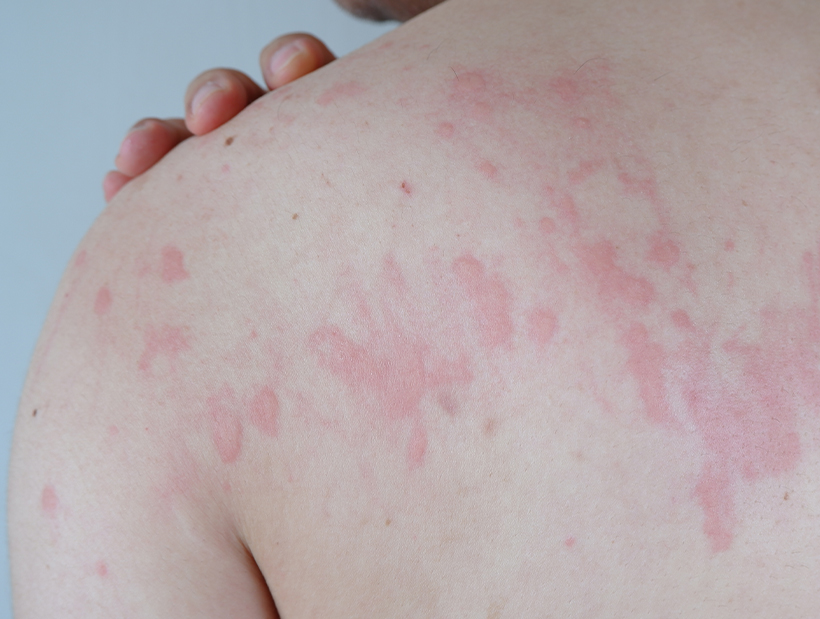
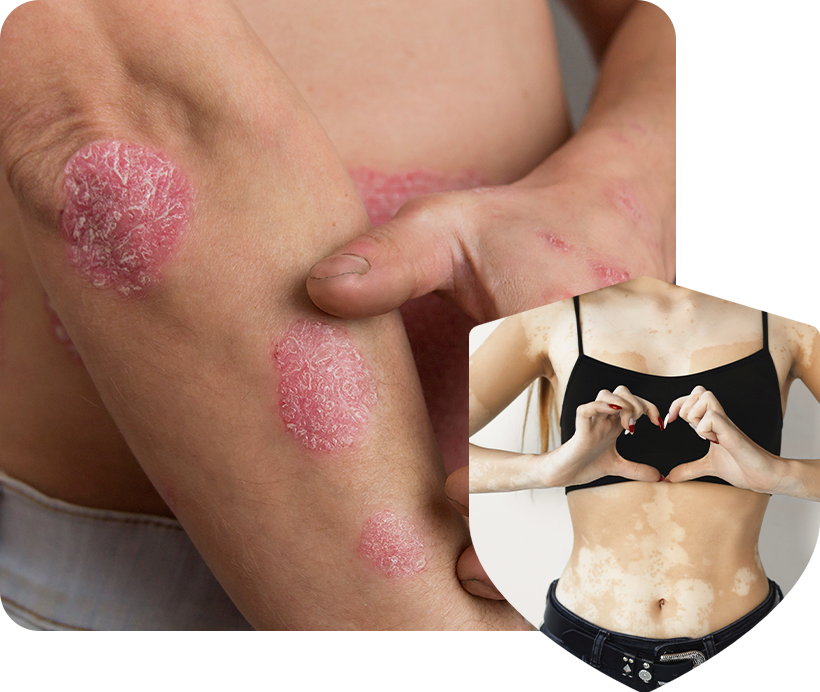
CIRS and Mold Poisoning Symptoms
If you're reading this page, chances are you're concerned that you might have CIRS or some form of mold poisoning. You may be wondering what you have - is it CIRS, or is it something else like Lyme disease? We can't provide the answer to that question without consultation and testing at our wellness center in Virginia. However, there are common symptoms of CIRS and mold toxicity you should know.
Some of the most common symptoms of CIRS include:
- Fatigue
- Decreased Word Finding
- Headaches
- Difficulty Concentrating
- Morning Stiffness
- Tremors
- Excessive Thirst
- Tingling
- Night Sweats
- Frequent Urination
- Confusion
- Mood Swings
Proactive Wellness Centers'
Tools for Diagnosing Mold Sickness and CIRS
Identifying and confirming if a patient is being impacted by CIRS and identifying the cause and source of the biotoxin are the two main steps in diagnosing CIRS and Mold Exposure. To diagnose CIRS and Mold Exposure, the following diagnostic tools are commonly used:
To learn more about the debilitating symptoms of mold sickness and to find out whether you have CIRS or something else, contact Proactive Wellness Centers. Our team of medical professionals is here to help you every step of the way.

Hope for Patients with CIRS: Proactive Wellness Centers' Mold Illness Treatment in Lincolnia, VA
Our approach to treating CIRS utilizes integrative and functional medicine, The Shoemaker Protocol along with the latest evidence-based approaches to treating mold illness and the related secondary issues that it causes. We begin by utilizing advanced diagnostics to confirm the presence of the condition and identify the specific environment causing continued exposure to biotoxins. Next, we take a stepwise approach to halt the progression of the disease, eliminate biotoxins from the body, and reverse any damage to cellular structures. Our goal is to help patients achieve a full recovery.
To do this, we not only have to identify the primary condition like CIRS or Lyme disease, but we then have to continue looking to see if you have any of the common secondary conditions like reactivated EBV, Mast Cell Activation Syndrome (MCAS), and others. Once we understand the totally of your condition, then we can implement a treatment plan tailored for you. Yes, it will leverage the Shoemaker protocol, but we have found that we have to extend the protocol to cover the secondary issues that we uncover.
The steps we follow to reach that goal include:
- VIP
- TGF Beta 1
- MMP9
- ADH
- Antigliadin
- Androgen Imbalance
- C4a
- More
- Barley
- Cottonseed
- Peanuts
- Corn
- Black Pepper
- Figs
- Rice
- Bread
- Beans
- More

Fibromyalgia, Lupus, Chronic Fatigue, and Chronic Pain Syndrome are examples of illnesses that are often diagnosed without such confirmatory tests. If you are experiencing unexplained health issues or have been exposed to water-damaged buildings, it is possible that you are suffering from CIRS or a mold illness.
The good news is that we can diagnose and address this disease with a mold illness treatment program in Lincolnia, VA tailored to your body and your symptoms. That way, we can help you regain your health as soon as possible.
Be Wary of These
5 Symptoms of Mold Exposure
Mold spores can easily be brought into your home on your shoes or clothing or through open windows or doors. If these spores can find a warm, damp, humid environment, they can begin to multiply. Soon, your home can be filled with toxic mold. If you think mold has invaded your home or another environment, like in an office or warehouse, it's important for you to know about the symptoms.
Unfortunately, diagnosing mold issues can be exceptionally difficult. But why? The answer can be quite frustrating.
Understanding the Difficulty of Diagnosing Mold Symptoms
Many doctors fail to recognize the impact of mycotoxins emitted by certain indoor mold species, which can lead to chemical and inflammatory reactions. While conventional medicine acknowledges that mold can cause allergies, it may overlook this crucial aspect of mold-related health issues.
This can happen for several reasons:
- Standardized treatment protocols for mold toxicity are offered mostly by Functional/Integrative physicians as the conventional physicians are not on board despite over 20 years of published research. Due to this issue, patients spend precious months/years going from doctor to doctor in the conventional channel with no answers.
- Though ERMI testing has been accepted in the integrative/functional medical community, there isn't a "gold standard" in mold testing that is universally accepted.
- Mold symptoms can manifest in vastly different ways depending on the patient.
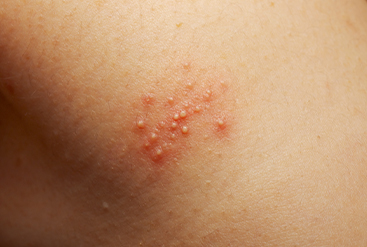
After understanding the points above, it's no wonder that mold poisoning can be hard to diagnose. Fortunately, integrative and functional holistic medicine providers and wellness centers like Proactive Wellness are flipping the proverbial script. Unlike traditional clinics, our team considers environmental factors that can affect patient health and has advanced training to provide mold poisoning treatment in Lincolnia, VA.
Now that you understand why mold symptoms are so hard to diagnose let's take a closer look at five of the most common indicators of mold sickness.
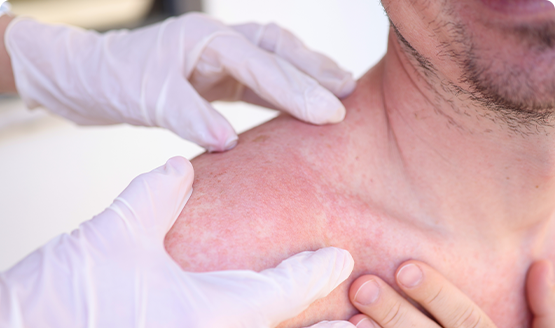
Fatigue
Fatigue is probably the number one symptom of well over 90% of CIRS patients. The level of fatigue varies from 5 on a 10 point scale all the way to 10 on a 10 point scale. Many patients can no longer work or remain productive as in the worst cases, the fatigue is overwhelming. College students living in moldy dorms frequently have to drop out of school until the illness is treated effectively. Older adults have to retire or stop working due the fatigue. If you have overwhelming fatigue, CIRS may be a major contributor to your illness.

Breathing Problems
Exposure to mold can cause a host of respiratory problems, such as breathing difficulties, allergies, and asthma, especially in individuals with a weakened immune system. Mold can worsen asthma, irritate the nasal passages, lungs, and throat, and lead to symptoms such as wheezing, coughing, sneezing, sore throat, and nasal congestion. Other health issues such as hypersensitivity pneumonitis, sinus congestion, allergic rhinitis, asthma, and allergic bronchopulmonary aspergillosis have also been associated with mold sickness.
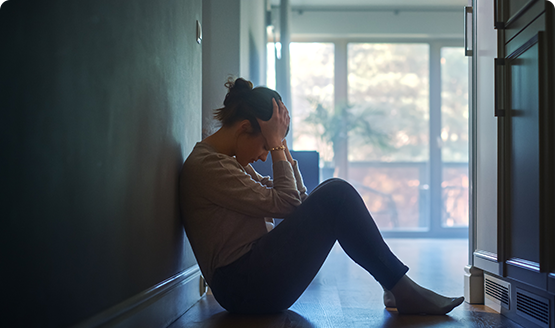
Sadness and Depression
Mold can cause a variety of illnesses that can show up in different ways, such as psychological symptoms like anxiety, depression, insomnia, concentration problems, and memory loss. It has been reported that nearly 40% of people who live in moldy homes experience depression. Researchers suggest that exposure to toxic mold and dealing with the physical symptoms of mold illness can contribute to mental health issues.
Due to this phenomenon, many mold patients are given antidepressant medications in the conventional channels.
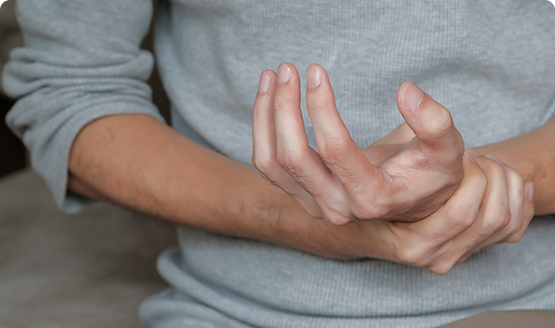
Feeling "Pins and Needles"
Numbness, twitching, or tingling in the extremities, such as hands, feet, legs, and arms, is another symptom of mold illness. The sensation is similar to pins and needles, which are often felt when the body is held in an uncomfortable position for a long time. While this sensation can indicate serious nerve damage or disease, it can also be a symptom of mold sickness.

Digestion Problems and Disorders
When exposed to mold, individuals may experience various digestive problems. Some may lose their appetite, leading to unintentional weight loss. Others may suffer from stomach pain, nausea, diarrhea, and vomiting. Furthermore, the influx of mold spores may trigger systemic inflammation, causing bloating and weight gain due to the digestive system's exposure to harmful mold.

Ask Us Anything
Top Tips for
Controlling Mold in Your Environment
It's not possible to completely eliminate all mold and mold spores from your home or place of work. However, since mold spores need moisture to grow, the best way to prevent or get rid of growth is to reduce the moisture in your environment. If you already have mold growing there, it's important to clean it up and address the issue causing dampness. If you only clean up the mold and don't address the underlying problem, the mold is likely to return.
Here are some tips to help reduce moisture throughout your home or office:
- Use A/C or Dehumidifiers. This is especially important if you live in a hot, humid area of the United States.
- Ensure A/C drip pans are clean, dry, and obstruction-free.
- Thoroughly dry areas that are damp or wet within 48 hours.
- Be sure to install insulation in cold areas like your home's exterior walls and windows. Doing so will reduce condensation.
- Work with an HVAC company to check your HVAC system. Doing so can help ensure your unit is removing as much humidity as possible.
- Keep the humidity in your home below 60% whenever possible.
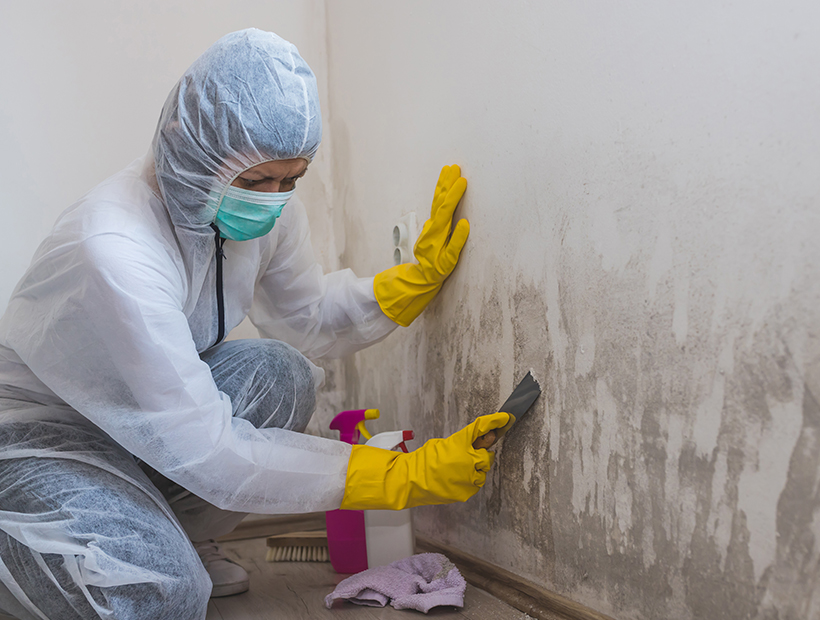
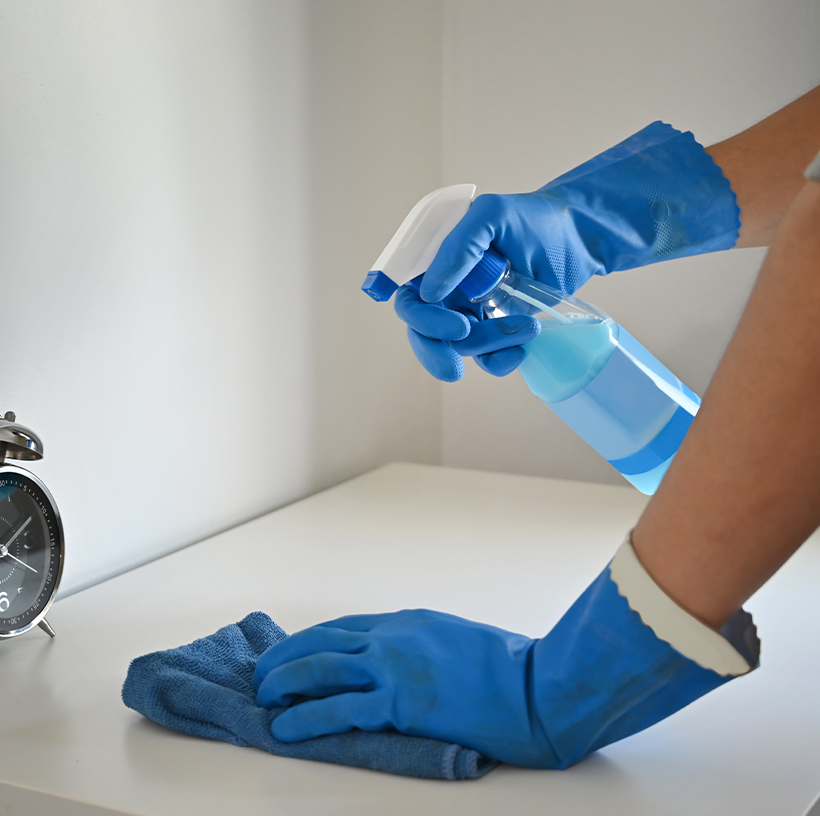
Here are some tips to help reduce moisture in your kitchen:
- Check for leaks near your ice makers, sinks, and anywhere else water is present.
- Make sure your exhaust fans are directing moisture outside, not into your attic.
- If you notice your appliances are causing moisture on windows and other surfaces, turn them off as soon as you're done using them.
Here are some tips to help reduce moisture in crawlspaces:
- Use a plastic covering on the dirt in your crawlspace. Doing so will prevent moisture from saturating the ground.
- Ensure that your crawlspace or basement is ventilated well.
- Check your home's gutters. Make sure they're directing water away from your property, not toward your foundation or crawlspace.
Your Top Choice for
Mold Toxicity Treatment in Lincolnia, VA
Trying to "tough it out" through life with CIRS isn't any way to live. If you're suffering from the effects of biotoxin illness, you should know that there are solutions available to help you reclaim your health and your life. With the help of a can-do attitude, healthy living, and mold illness treatment from Proactive Wellness, there's light at the end of the dark tunnel you're trapped within. Contact our office today to get started on your first step toward recovery!
Appointment Form
Latest News in Lincolnia, VA
Investigation finds 'systemic gaps' in FCPS hiring after counselor convicted of sex crimes allowed to continue working
wusa9.comhttps://www.wusa9.com/article/news/local/fairfax/investigation-finds-systemic-gaps-fcps-hiring-after-convicted-counselor-allowed-continue-working/65-629a395b-6cb6-4b7c-afdd-40aa7a6f4d1b
Darren Thornton worked as a middle school counselor in Fairfax County despite a conviction for sex crimes against children.LINCOLNIA, Va. — Tuesday, former Fairfax County Public Schools counselor Darren Thornton was in a Chesterfield County, Virginia courtroom on charges of soliciting prostitution, the allegations that ...
Darren Thornton worked as a middle school counselor in Fairfax County despite a conviction for sex crimes against children.
LINCOLNIA, Va. — Tuesday, former Fairfax County Public Schools counselor Darren Thornton was in a Chesterfield County, Virginia courtroom on charges of soliciting prostitution, the allegations that got him fired this past summer from his job at Glasgow Middle School.
By law he should have been fired nearly two years ago when he was first charged and eventually convicted of sex crimes against children.
For that, Thornton was placed on probation. He had already passed a background check to get hired with Fairfax County Public Schools and kept working despite his conviction.
"We need to understand what happened here and why it happened," said Kathleen Brown, a FCPS parent at a Tuesday night meeting at Glasgow Middle.
At the meeting, the FCPS superintendent Dr. Michelle Reid shared with parents the results of an independent investigation into Thornton's employment.
The report found the district was never notified of Thornton's original arrest or conviction.
And also found "several systemic gaps" in the FCPS hiring process "including on reference checks, verification of the appropriate license, and information sharing between jurisdictions" among other issues the superintendent says FCPS is addressing as quickly as possible.
"One of the things that we have to do first is name that we have a concern, acknowledge that, look into it, and then follow recommendations that we know to be best practice moving forward," Dr. Reid told WUSA9. "I don't believe it's going to happen again here in Fairfax County Public Schools. And, I believe our families can trust us."
"I really think Dr. Reid is on the right path here. But I think we have to persist," said Brown echoing the concerns of some other parents at the meeting.
"To blithely say, 'No, this is not happening, it's not going to happen again here,' is very naïve," said Brown. "We have got to realize we've got all sorts of concerns about our kids and I think they're valid concerns."
One change Dr. Reid said she wants is regular background checks of current staff, after they are hired. But, she says she needs the commonwealth's help to make that feasible by enrolling in a FBI program called Rap Back.
The superintendent also says she has already taken disciplinary action on school employees and more could be coming but she won't say who or what it was.
'There was a car in our front yard' | Homeowner calls for lower speed limit after a string of crashes on Lincolnia Road
Evan Koslofhttps://www.wusa9.com/article/news/local/virginia/there-was-a-car-in-our-front-yard-homeowner-calls-for-lower-speed-limit-after-a-string-of-crashes-on-lincolnia-road-alexandria-northern-virginia/65-c4d88f48-4c15-468a-8ab3-7b6b26af881d
Debi Gerald, who lives along Lincolnia Road, said that they've tracked 15 crashes on a small stretch of Lincolnia Road so far in 2023.More VideosALEXANDRIA, Va. — On her front lawn in the Alexandria area, Debi Gerald looked through a photo album. This album is not filled with childhood memories or family portraits. Every page is full of ...
Debi Gerald, who lives along Lincolnia Road, said that they've tracked 15 crashes on a small stretch of Lincolnia Road so far in 2023.
More Videos
ALEXANDRIA, Va. — On her front lawn in the Alexandria area, Debi Gerald looked through a photo album. This album is not filled with childhood memories or family portraits. Every page is full of crash photos.
"Our mailbox down at that point," she laughed, pointing at one of the pages.
Gerald lives in a home along Lincolnia Road, nestled in between Columbia Pike and Little River Turnpike. She said this stretch, which many drivers use as a cut-between, has become a hotspot for crashes.
“Cars have been running off the road for as long as I can remember,” she said.
Along with her mother, Gerald started tracking every crash in a spreadsheet last year. In 2022, the duo documented 27 crashes, and so far in 2023, they've counted 15.
With each incident, Gerald jots down the date in one cell and notes in the other, using sentences like "car into ditch" or 'two signs hit.' On June 24, 2023, she jotted down an especially dramatic note.
"Three car accident at Lincolnia Rd. and Sano St. One car ended up in our yard. That driver was taken to the hospital for pain due to airbag deployment."
Gerald said that this crash could have been a lot worse.
"We woke up to a loud noise," she said. "And there was a car in our front yard. That easily could have happened when my 84-year-old mother was out cutting the grass in the front yard.”
Gerald is uniquely suited for this project.
Her late-brother, Wes Gerald, was a fire dispatcher for Fairfax County, and had a passion for fire photography. When he passed away, Debi took up the camera, to honor his memory, as documented by WUSA9 in 2019.
"There's probably not a day that goes by when I don't think about my brother," she said in 2019. "But this does help. Knowing that it meant so much to him. Now it means this much for me as well."
Due to this background, Gerald is used to having the scanner blaring at all hours. When a crash happens nearby, she is able to respond quickly to snap a photo.
Gerald has brought this data to the Virginia Department of Transportation, urging them to lower the speed limit. However, VDOT has so far turned down this request, as explained in a statement to WUSA9:
"VDOT was contacted by Supervisor Gross’s office regarding an inquiry into changing the speed limit on Lincolnia Rd. A speed limit study was conducted for Lincolnia Rd. between Barnum Lane and Columbia Pike and based on the findings of the study, the recommendation was to maintain the speed limit of 35 mph."
"VDOT adheres to specific policies along with the Code of Virginia to ultimately determine if a speed limit study is required and a change is necessary. Not only is crash and speed data considered, by also such things as pedestrian activity, roadway context, and driveway density are included in the study. Once a speed study is completed, a decision can be made in coordination with the district traffic engineer, district traffic operations director, and finally the state traffic engineer to implement the change, if necessary."
Despite VDOT's response, Gerald said that she'd keep fighting for changes on Lincolnia Road.
"We are concerned about our neighbors," she said. "We’re concerned about the amount of damage done to cars.”
Neighborhood Spotlight: Parklawn
Annandale Todayhttps://annandaletoday.com/neighborhood-spotlight-parklawn/
Like so many other subdivisions in the Annandale/Mason area, Parklawn was built on farmland to meet the needs of population growth following World War II.The neighborhood, generally between Columbia Pike, Holmes Run Stream Valley, and Lincolnia Road, was built in 1955 on what had been the Clark family’s dairy farm.The Clark House was moved from its ...
Like so many other subdivisions in the Annandale/Mason area, Parklawn was built on farmland to meet the needs of population growth following World War II.
The neighborhood, generally between Columbia Pike, Holmes Run Stream Valley, and Lincolnia Road, was built in 1955 on what had been the Clark family’s dairy farm.
The Clark House was moved from its original location in the 1980s to make way for the development of the Bancroft Mews townhouses. It was restored and now sits on a hill overlooking Columbia Pike and the Barcroft Plaza shopping center. There’s another smaller house owned by the Clark family on Braddock Road in Parklawn.
The original community had 625 houses, says Richard Zambito, president of the Parklawn Civic Association, but has grown as about 10 smaller neighborhoods were annexed over the years.
Most of the houses are basic ramblers, although there are a few split levels. The original houses are either 1,200 square feet one-story homes built on a slab or two-story 2,400 square feet houses, Zambito says. Most have had additions built over the years, and some have been totally transformed.
Home prices vary widely, from the low-$400,000s to close to $700,000 depending on size and the extent of improvements.
Few houses are on the market, however. “No one builds one-story homes anymore, so these homes are popular and sell quickly,” says Zambito, noting they attract empty nesters, retirees, and young families who’ve been priced out of Arlington.
Nearly all the streets are named for national parks, such as Yellowstone, Everglades, Teton, and Bryce. There’s an Arcadia Road, which is probably a misspelling of Acadia, a park in Maine.
There are so many trees, “some streets really do feel like a park,” Zambito says. Parklawn is bordered by Holmes Run Valley Stream Park, which has a nature trail and a new pedestrian bridge.
Other assets, cited by Zambito, include the Parklawn Pool, Glasgow Park, the baseball fields at Parklawn Elementary School, the wide diversity in ages and cultures among the residents, and the many sidewalks. Other than Braddock Road, there aren’t any cut-through streets, making Parklawn “somewhat secluded and insulated from the chaos of Columbia Pike and Lincolnia Road,” he says.
“People know each other here. That’s one of the really nice things,” he says. “On some levels it’s like a big second family.”
At one time, the civic association and the Parklawn Recreation Association, which oversees the pool, had been combined but split up in the 1980s or 1990s, according to neighborhood lore, as residents sparred over the building of tennis courts. The civic association eventually dissolved, and the tennis courts, which had been poorly maintained, were demolished about five years ago.
Resident Mollie Loeffler revised the Parklawn Civic Association at about that time, with help from lots of volunteers, including Dave Galway. The group received several Fairfax County Neighborhood Enhancement Partnership Program grants for projects to clean up and improve Glasgow Park and add landscaping and signs at the neighborhood entrances.
The civic association also hosted several events to bring the community together, including the Spooky 5K, potluck dinners, National Night Out gatherings, and a house tour.
Parklawn is dealing with some of the same challenges facing other neighborhoods in Mason District, including an increase in rental properties, a decline in property maintenance, residents’ failure to pick up litter, and the difficulty getting people to volunteer for community projects.
A couple of recent land use issues have gotten the neighborhood’s attention in a big way, however. Plans in 2012 for a cell tower on property owned by the Parklawn Recreation Association sharply divided the community. Some residents argued that the pool needed the revenue from the cell tower while those opposed complained it would be an eyesore that would bring down property values.
The issue was finally resolved in May 2014, when a state appeals court affirmed a decision against the tower by the Fairfax County Board of Zoning Appeals. “People put that conflict behind them,” Zambito says, noting that pool membership is up and, barring any new problems, “the pool will survive.”
Last fall, many Parklawn residents strongly opposed the Commonwealth of Virginia’s plans for a Department of Motor Vehicles customer center in the Barcroft Shopping Center. Local members of the General Assembly ultimately persuaded the DMV not to relocate.
That was a great victory for the neighborhood, not only because the DMV would have created traffic and parking problems, but because it might have caused Harris Teeter to move away, Zambito says. Many residents see that store as not only a shopping destination, but a good place to meet your neighbors.
Parklawn Snapshot
Location: Mason District, east of Columbia Pike, with an Alexandria postal address.
Schools: Parklawn Elementary School, Glasgow Middle School, Stuart High School.
Recreation: Parklawn Pool, Glasgow Park, Holmes Run Stream Valley, Mason District Park.
Home prices: $430,000 and up.
They built the road they would be forced to walk: a brief history of Little River Turnpike
Annandale Todayhttps://annandaletoday.com/they-built-road-they-would-be-forced-to/
By James Albright, from the Living Life in 4D blogFrom my front porch, looking over my garden, I can see the two blocks to the intersection of my street with the Little River Turnpike here in Lincolnia. I typically walk there once a day or so on my way to the local coffee shop or to Green Spring Gardens, a stunning horticultural center that reminds me of why I live here in Fairfax County. All in all, it is an idyllic life – early 21st century troubles notwithstanding....
By James Albright, from the Living Life in 4D blog
From my front porch, looking over my garden, I can see the two blocks to the intersection of my street with the Little River Turnpike here in Lincolnia. I typically walk there once a day or so on my way to the local coffee shop or to Green Spring Gardens, a stunning horticultural center that reminds me of why I live here in Fairfax County. All in all, it is an idyllic life – early 21st century troubles notwithstanding.
Little River Turnpike carries its history in its name. It was the turnpike – the toll road – that led to the Little River, some 34 miles to the west. One of the first-ever roads constructed in this country, it stretched from Alexandria through farm and field countryside. Today it has many names along the way, but right here in Annandale, it is still called the Little River Turnpike.
Although its six-lanes are not often loved, its history is indelibly connected to the counties it passes through. But that history – of sleepy farmers on slow carts, bearing their produce to the wharves of Alexandria – is really just one side, one happy side, of the road’s past.
The rest of its history is something that I suspect few in my area know about. For the Little River Turnpike is a road built by enslaved Americans that served, eventually, as the path their children and their children’s children, would take when shackled at the feet, they were marched away from their homes to the Deep South.
When I look up the street to the Turnpike, I see only cars racing by on their way to Alexandria, about four miles to the east. Like so many roads, we don’t see really see it. We see cars, bicycles, stoplights, street signs, storefronts, but we don’t see what went into the making of the road – why it went here, who did the work, and what happened to them.
The Turnpike was an incredible challenge – the structure of the road itself was very modern, very expensive, and very arduous. Since this was early 19th century Virginia, the builders turned to the labor market they were comfortable exploiting: enslaved Americans who were to be rented under contract.
Twenty men were retained to do the work of the overseers over the next few years. The proceeds of the work did not go to those who did the actual work; no, that money went to those who enslaved them. Although we have never really listened to their voices, the workers clearly spoke – a number ran away from the job, a number large enough that they had to find another group to keep the work going.
In my mind’s eye, I can see the men clearing fences and trees out of the way, shoveling the soil to build the mounded center of the roadway and then sloping it away from the crown. Stones had to be lain just so, so water would drain; ditches would need to be dug to carry water away. The road had to be dry – or at least mostly dry – so that the mud that bedeviled so much cartage and horses in that day wouldn’t impede travel and justify the 10-cent tolls.
| A coffle of slaves being marched from Virginia west into Tennessee, c. 1850. [Abby Aldrich Rockefeller Folk Art Museum, Colonial Williamsburg Foundation] |
The climate in Virginia can be terribly hot or numbingly cold – there is no doubt in my mind that the overseers would not care too much about the comfort of their workers. The task at hand had to be completed.
It took eight years of hard work until December 1811 when the final pieces were put in place. From that point, the road became a major thoroughfare, one so popular that towns sprang up along its path and shaped the infrastructure that underpins Northern Virginia.
One can look at a map of the whole area and still trace the straight line that was the Little River Turnpike, now routes 236 and 50, from the city to the hills. The road became the backbone of transportation from the Piedmont and the Shenandoah Valley to the waterfront of Alexandria.
Because the road was so efficient a mover of produce and carts, it also served to move men, women, and children from what was called the Tidewater all the way to Louisiana and Mississippi.
Once the nation had restricted the “slave trade” – the seizure of humans from Ghana, Senegal, Biafra, Congo, Angola, and other places – and the nature of agriculture in the young country had shifted from tobacco in the mid-Atlantic to cotton in the Deep South, the demands of labor also shifted.
White landowners in Maryland, Virginia, and the Carolinas found a new way to profit – many had their enslaved workers sold to cotton slave camps in the south. Families were broken up, children separated from adults, communities shattered as merchants of the enslaved found what is now called the “domestic trade” to be a profitable exercise.
In Alexandria, prisons full of these men and women were used to house them while sales could take place. These prisons still stand along Duke Street in Alexandria. From these prisons, the enslaved were either sent by boat to New Orleans or shackled together in “coffles” and walked overland to Louisiana.
To describe the experience of the coffles would be impossible without falling prey to minimizing the horror. For our discussion, however, it is the passage itself that concerns. For those prisons sent the enslaved in coffles to trudge down Duke Street – the starting point of the Little River Turnpike. From the prisons, the coffled men and women would ascend towards Shuters Hill and the Turnpike. The last stop: New Orleans.
Bound together, moving slowly, the groups of enslaved would probably manage about 20 miles a day. If they left early in the morning, they would be reaching the outskirts of Green Springs Farm in Lincolnia (then Uniontown) probably mid-morning. Coming up the Little River Turnpike where it crests the hill after Turkeycock Run, they would walk along the field of the large farm, the promise of water from its fresh spring perhaps used to entice them to quicken their pace.
If one of those walking in shackles looked to the left, they would see fields of corn and maybe a small orchard, looking right at the place my house would be built in another hundred years. They might see other enslaved Americans working in those fields, fields that were now poor after long periods of cultivation, workers straining in the sun. They might have looked at each other – both enslaved in the only land they had known right there where Cherokee Avenue meets Little River Turnpike, where a dentist and a daycare center now watch the car dealer across the street. They might have wondered what would become of the other?
And like that, they would part, one to his plow the other to the stony path ahead of him. At some point in those years, the continuous passage of these thousands of enslaved men and women trafficked to the South, would get less attention. Maybe the workers in the fields wouldn’t even look up much anymore – just another group moving past, like so many before. Or maybe they would be glad that they were not being torn from their families, their children.
I think about this a lot as I walk along Little River Turnpike, nearly 200 years after that time. Only a little of that time remains – the beautiful house of Green Springs that was there before the Turnpike was built now hidden behind the car dealer, the streams that still flow to this day at the foot of the hill, the hills themselves that posed a serious challenge to the builders. Even those people who worked in the fields, they remain. For their descendants surely settled in this area after the Civil War was fought for them. Lincolnia, just down the way on Little River Turnpike, was primarily a Black American community, with a school, stores, churches, and cemetery.
The decimation of the American community brought on by the domestic trade of the enslaved remains a central character in the nature of our country. So, in a way, the story of the road that edges my neighborhood is both a story of the past and a story of the future.
Much of the factual basis for this post (but not the opinions) comes from an article from 2017 by Debbie Robison in local history blog, Northern Virginia Notes, an article by the renowned historian Edward Ball, “The Slavery Trail of Tears” in Smithsonian, and Edward Baptiste‘s The Half Has Never Been Told: Slavery and the Making of American Capitalism.
When To Trick Or Treat In Fairfax County; Trunk-Or-Treat Events For Kids
Emily Leaymanhttps://patch.com/virginia/greateralexandria/when-trick-or-treat-fairfax-county-2022-trunk-or-treat-events
FAIRFAX COUNTY, VA — It's that time of year when children will show up at doorsteps, hoping to wow residents with their costumes in exchange for candy. In Fairfax County, trick-or-treat is expected on Monday, Oct. 31.Fairfax County government does not set a specific date for trick-or-treat, so it is expected to happen the evening of Oct. 31. Some homeowners associations or apartment complexes may set different times for trick-or-treat.To prepare for trick-or-treat, Fairfax County offers the following safety tips:...
FAIRFAX COUNTY, VA — It's that time of year when children will show up at doorsteps, hoping to wow residents with their costumes in exchange for candy. In Fairfax County, trick-or-treat is expected on Monday, Oct. 31.
Fairfax County government does not set a specific date for trick-or-treat, so it is expected to happen the evening of Oct. 31. Some homeowners associations or apartment complexes may set different times for trick-or-treat.
To prepare for trick-or-treat, Fairfax County offers the following safety tips:
Trunk-or-Treat/Trick-Or-Treat Events
Here are some upcoming trunk-or-treat and trick-or-treat events around Fairfax County. If you would like to share an event, email emily.leayman@patch.com. You can also add events to your local Patch calendar.
Find out what's happening in Greater Alexandriawith free, real-time updates from Patch.
Trunk or Treat: Friday, Oct. 21, 6 p.m. to 8 p.m.
Trunk or Treat: Saturday, Oct. 22, 4 p.m.
Trunk or Treat: Saturday, Oct. 22, 3 p.m.
Trunk or Treat: Saturday, Oct. 22, 6 p.m. to 8 p.m.
Trunk or Treat at Franconia United Methodist Church: Saturday, Oct. 22, 4 p.m. to 6 p.m.
Trunk or Treat: Sunday, Oct. 23, 2 p.m. to 3:30 p.m.
Trunk or Treat: Tuesday, Oct. 25, 6 p.m. to 8 p.m.
Trunk or Treat: Wednesday, Oct. 26, 5:30 p.m. to 6:45 p.m.
Trick or Treating at Mount Vernon: Saturday, Oct. 29
Trunk or Treat & Chili Cook-Off: Saturday, Oct. 29, 2 p.m. to 5 p.m.
Trunk or Treat: Saturday, Oct. 29, 3 p.m.
Trunk-or-Treat Halloween Party: Saturday, Oct. 29, 10 a.m.
Trunk or Treat: Saturday, Oct. 29, 4 p.m. to 7 p.m.
Fall Festival/Trunk or Treat: Saturday, Oct. 29, 10 a.m. to 2 p.m.
Trunk or Treat: Saturday, Oct. 29, 1 p.m. to 3 p.m.
Trunk or Treat: Saturday, Oct. 29, 4 p.m. to 6 p.m.
Old Firehouse Festival of Frights and Trunk or Treat: Saturday, Oct. 29, 5 p.m. to 10 p.m.
Trunk or Treat: Sunday, Oct. 30, 5 p.m. to 8 p.m.
Trunk or Treat: Sunday, Oct. 30, 6 p.m. to 7:30 p.m.
Trunk or Treat: Sunday, Oct. 30, 3 p.m. to 5 p.m.
Mount Vernon Presbyterian Church Trunk or Treat: Sunday, Oct. 30, 12 p.m. to 2 p.m.
School of Music Trunk or Treat: Monday, Oct. 31
Trunk or Treat: Monday, Oct. 31, 6 p.m. to 8 p.m.
Disclaimer:


 (703) 822-5003
(703) 822-5003




